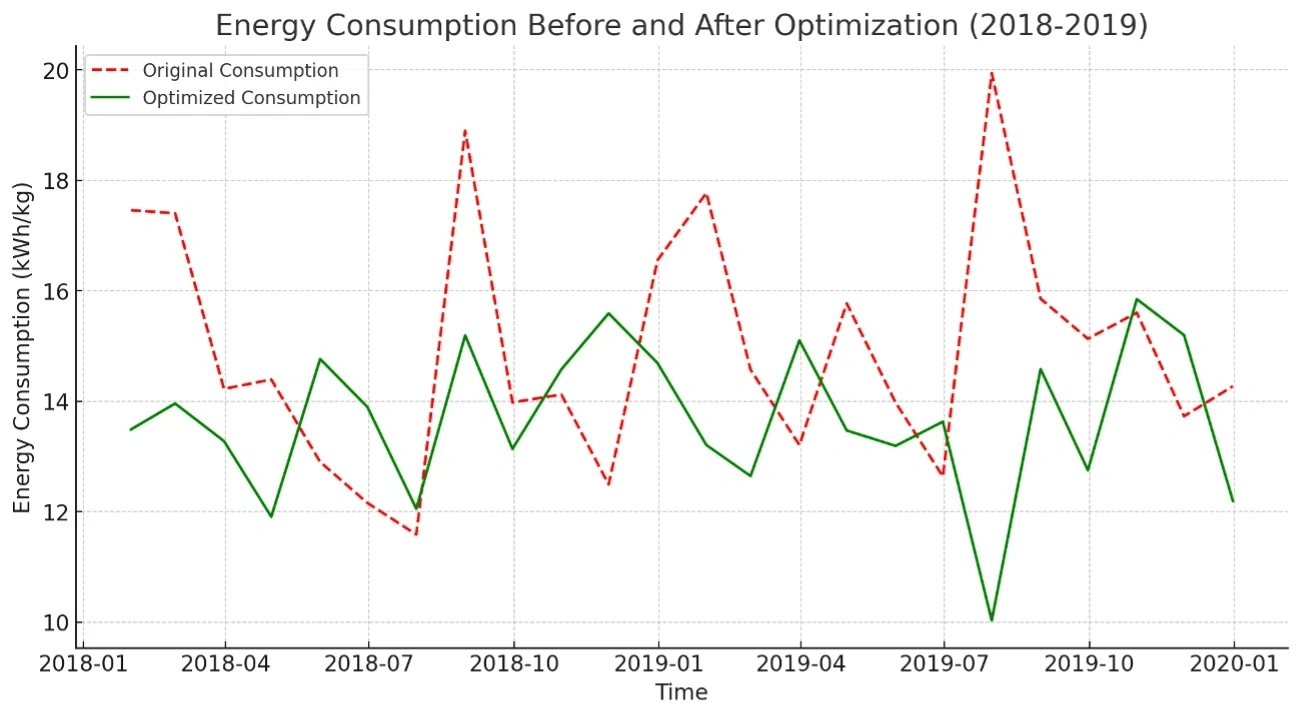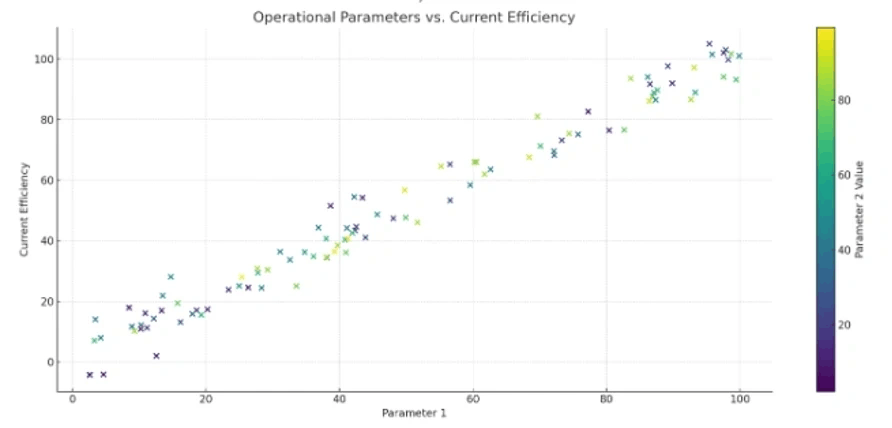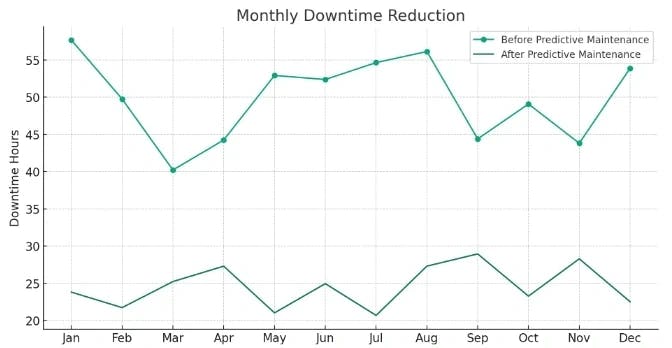Aluminum, a metal once more precious than gold, is now a cornerstone of modern manufacturing. It’s found in everything from soda cans to spacecrafts, making it an emblem of industrial progress. A Center for Strategic and International Studies (CSIS) report points out that, as of 2020, the US was the world’s ninth-largest producer of primary aluminum and the aluminum industry accounted for about $171.90 billion in total economic output, or roughly 0.79% of the US GDP.
In the constantly evolving landscape of industrial manufacturing, aluminum production is witnessing a significant transformation. Advances in IoT technologies, AI and green innovations are streamlining operational efficiencies and generating unprecedented value. Through examples, this article explores the impact of these technological advancements on the aluminum industry, highlighting the shift toward sustainability and profitability.
Sustainable production
An intense focus on sustainability marks the modern era of aluminum manufacturing. As the call for eco-friendly practices grows louder, the industry will pivots toward greener production methods. Breakthrough technologies now allow for the extraction of aluminum using renewable energy sources, significantly reducing the production process’s carbon footprint. Moreover, the industry increasingly relies on recycled materials, with the ethos of circular economy taking center stage.
The Aluminum Association reports advancements showing positive environmental trendlines over the past 25 years, signaling a robust move toward more sustainable practices. The traditional Hall-Héroult process of smelting aluminum, despite its high-energy demands — consuming about 13-15 kilowatt hours of electricity per kilogram of aluminum — is now being optimized. Manufacturers are unveiling inefficiencies and deploying corrective measures through meticulous energy data analysis. The emerging picture is where energy consumption plummets, with spikes in demand curtailed, forging a path toward the process's benchmark of 13-15 kWh/kg and below.
Technological innovations
Technology has always been a catalyst for industrial change and aluminum manufacturing is no exception. Automation and digitalization streamline production lines, enhancing precision and slashing operational costs. AI and ML algorithms are now being deployed to optimize everything from energy consumption to raw material usage.
Additionally, the industry is witnessing the advent of additive manufacturing techniques, such as 3D printing with aluminum alloys, which open new vistas for design and functionality. Technological prowess in smelting process anomaly detection within electrolytic cells showcases the acute application of predictive modeling. Instances of anode effects, temperature fluctuations and current efficiency loss, which once led to suboptimal operations, are now being preemptively managed. Utilizing models such as Long Short-Term Memory (LSTM) networks for voltage spike prediction and ConvLSTM for spatio-temporal temperature data, the industry is not only preventing inefficiencies but also safeguarding the environment with reduced PFC emissions.
Energy efficiency
The energy-intensive nature of aluminum production has traditionally been a point of concern. However, the new age of manufacturing is embracing energy-efficient processes to combat this challenge. The International Benchmarking Report on Energy and CO2 Intensities of the Aluminum Industry by Global Efficiency Intelligence outlines strategies for decarbonization, reflecting an industry-wide effort to reduce environmental impact and embrace efficiency. Also, the CSIS 2020 report underscores the importance of government policies in encouraging the decarbonization of the aluminum sector through renewable electricity investments, recycling incentives and reliable trade policies.
Innovations, such as Pidgeon, process and inert anode technology transform how aluminum is smelted, drastically reducing energy requirements and greenhouse gas emissions. Companies also invest in research to capture and utilize the heat generated during production, turning a byproduct into a resource. Real-time monitoring systems and continuous staff training are fortifying a culture of energy consciousness. As a result, there was a remarkable improvement in energy efficiency, with some plants achieving a 10% reduction in energy consumption and a 60% decrease in greenhouse gas emissions.
Quality and customization
Manufacturers adapt to agile production methods as market demands shift toward high-performance, customized aluminum products. The era of mass production is giving way to an era of mass customization. Advanced extrusion and forging techniques allow manufacturers to create complex, tailored aluminum components for various industries, from automotive to aerospace. The focus on quality is paramount, with stringent standards ensuring that the aluminum produced meets the specific needs of each application.
Through data-driven decision-making and predictive insights, manufacturers are extending the lifespan of their equipment and minimizing downtime. For example, IoT sensors and ML models are predicting operational instabilities and scaling in kilns, enhancing the quality of aluminum output. Implementing such technologies has led to a 30% reduction in downtime and a 60% decrease in substandard-quality production.
Economic impact
The aluminum industry remains a significant contributor to the global economy. As the sector evolves, it brings a surge in employment opportunities, innovation and economic activity. Investments in new aluminum plants and expansions of existing facilities signal confidence in the material's future. Moreover, the industry's move toward higher-value products may enhance profitability and longevity. Adopting predictive maintenance has resulted in energy cost savings, less frequent equipment replacement and improved safety records, with reported incidents dropping by two-thirds. These advancements underline aluminum's role as a vital player in the nation's manufacturing base.
Current challenges
While aluminum manufacturing is experiencing a technological and sustainable renaissance, it faces several pressing challenges. One of the primary issues is the reliance on the traditional Hall-Héroult smelting process, which remains energy-intensive despite recent advances. As energy costs fluctuate and sustainability mandates become increasingly stringent, manufacturers must continually adapt to balance operational efficiency with environmental impact.
Moreover, there is the challenge of integrating IoT technology within legacy systems. Older plants require significant upgrades to incorporate advanced sensors and data analytics capabilities, which necessitates substantial investment and can disrupt production. Another hurdle is ensuring a reliable supply of renewable energy. Inconsistent supply and storage challenges and regional grid limitations, which can vary in energy production methods and capacities, hampers the aluminum sector's push toward using renewable energy sources.
Additionally, the industry must contend with market volatility. The price of aluminum can fluctuate due to various factors, including shifts in global demand, trade policies and raw material costs. This volatility can affect profitability and force manufacturers to be more agile in their production planning and forecasting.
The aluminum era
The new era of aluminum manufacturing is characterized by an enlightened approach to production — one that marries technological advancement with environmental responsibility.
As we step into this promising future, the industry is poised to deliver aluminum products that are superior in quality and kinder to the planet. The metal of progress continues to reinvent itself, proving that even the most established industries can transform to meet the needs of a changing world.
Reference customer case studies mentioned above
- Energy efficiency optimization in aluminum smelting
A prominent US-based aluminum manufacturer’s first significant effort is focused on energy efficiency optimization in aluminum smelting. The goal here was to curtail energy consumption while maintaining the high quality of aluminum output. Facing the inherent challenge of the energy-intensive Hall-Héroult electrolysis process, which typically demands between 13-15 kWh/kg, the approach was to analyze energy consumption data to identify and address inefficiencies. Implementing optimizations and meticulous analysis yielded fruit, resulting in a noteworthy 10% reduction in energy usage, cutting it down from an average of 15 kWh/kg to 13.5 kWh/kg.

Source: Author
- Anomaly detection in electrolytic cells
Some advancements were made in the realm of anomaly detection within electrolytic cells. These cells, integral to the smelting process, are often prone to anode effects, temperature fluctuations and current efficiency losses, all of which can spiral into significant operational and safety issues.
The proactive solution implemented involved the deployment of IoT sensors alongside AI-driven models for meticulous real-time anomaly detection. The impact of this integration was profound, leading to a 60% reduction in perfluorocarbon (PFC) emissions, which are potent greenhouse gases, and a 30% decrease in operational downtimes, enhancing both the environmental footprint and efficiency of the operations.

Source: Author
The scatter plot depicts the relationship between operational parameters (Parameters 1 and 2) and current efficiency. The color gradient represents the value of Parameter 2, providing insights into how these parameters influence efficiency. This analysis helps identify patterns that may lead to efficiency loss, guiding interventions such as adjusting the anode-cathode distance or optimizing the alumina dissolution process.
- Preventing unscheduled downtimes in rotary kilns
In addressing the challenges associated with the high-temperature operational stress in rotary kilns — stress that typically leads to wear and tear, mechanical issues and process instabilities — a sophisticated solution framework was adopted. This involves the use of high-temperature-resistant sensors and the application of AI for predictive maintenance.
The results were striking:
- An increase in the lifespan of the kilns
- A 30% reduction in unscheduled downtimes
- A marked improvement in overall energy efficiency
Adopting these technologies not only improved the operational performance but also contributed to the longer-term sustainability and cost-effectiveness of the aluminum manufacturing process.

Source: Author
References:
- https://www.everycrsreport.com/reports/R47294.html
- https://www.csis.org/analysis/decarbonizing-aluminum-rolling-out-more-sustainable-sector
- https://www.globalefficiencyintel.com/aluminum-climate-impact-international-benchmarking-energy-co2-intensities
- https://www.csis.org/analysis/climate-solutions-series-deep-decarbonization-pathways
- https://www.ctc-n.org/technologies/inert-anode-technology-aluminium-smelters
- https://www.crugroup.com/knowledge-and-insights/insights/2021/emission-control-accelerates-pace-of-inert-anode-development/
- https://assets.new.siemens.com/siemens/assets/api/uuid:3d606495-dbe0-43e4-80b1-d04e27ada920/dics-b10153-00-7600truecostofdowntime2022-144.pdf
- https://www.pwc.nl/nl/assets/documents/pwc-predictive-maintenance-4-0.pdf
- What is Pidgeon process?
The Pidgeon process is primarily used for magnesium production, but it's important to understand its context when discussing alternative processes for aluminum. It involves the reduction of magnesium oxide using silicon in a vacuum environment. - What is inert anode technology?
Inert anode technology is an innovative approach in the aluminum smelting process aimed at reducing carbon emissions. Traditional aluminum production uses carbon anodes, which produce CO2 when they react with alumina (Al2O3) during electrolysis. Inert anode technology replaces these with non-consumable anodes.




